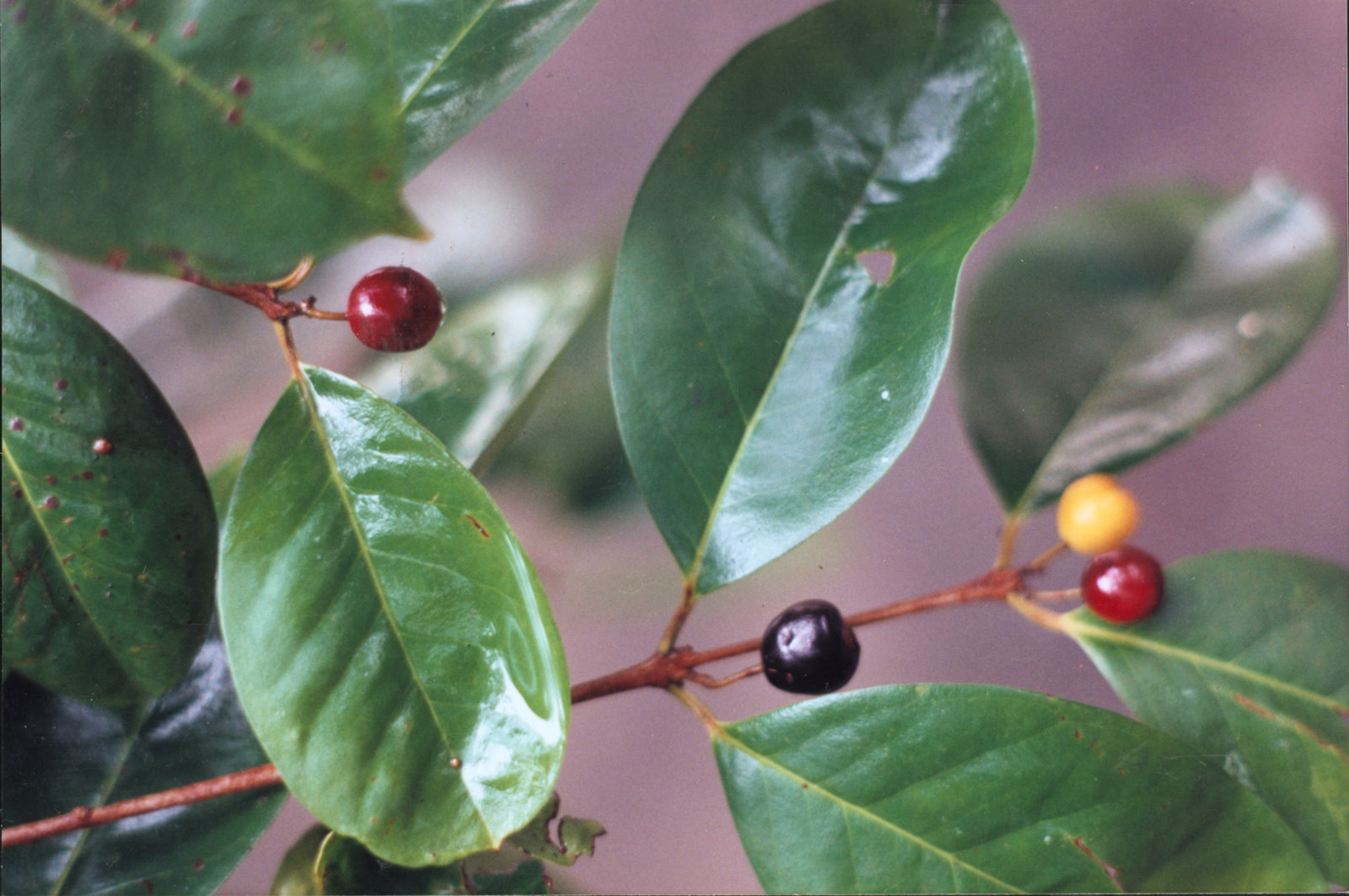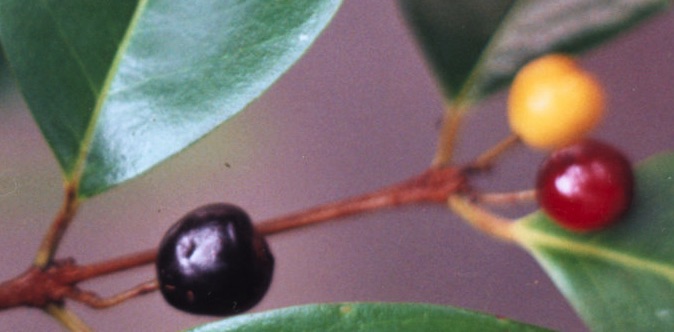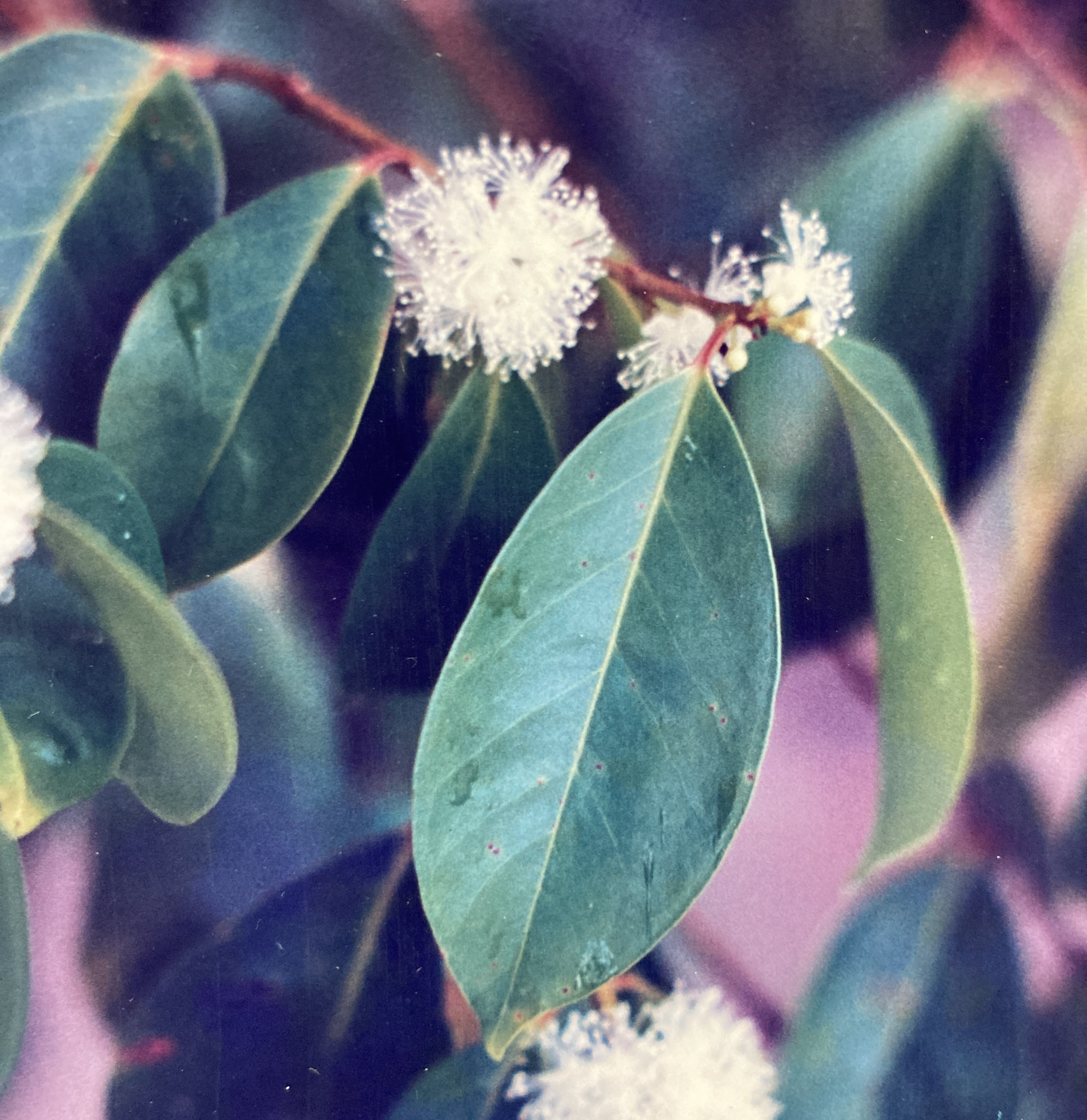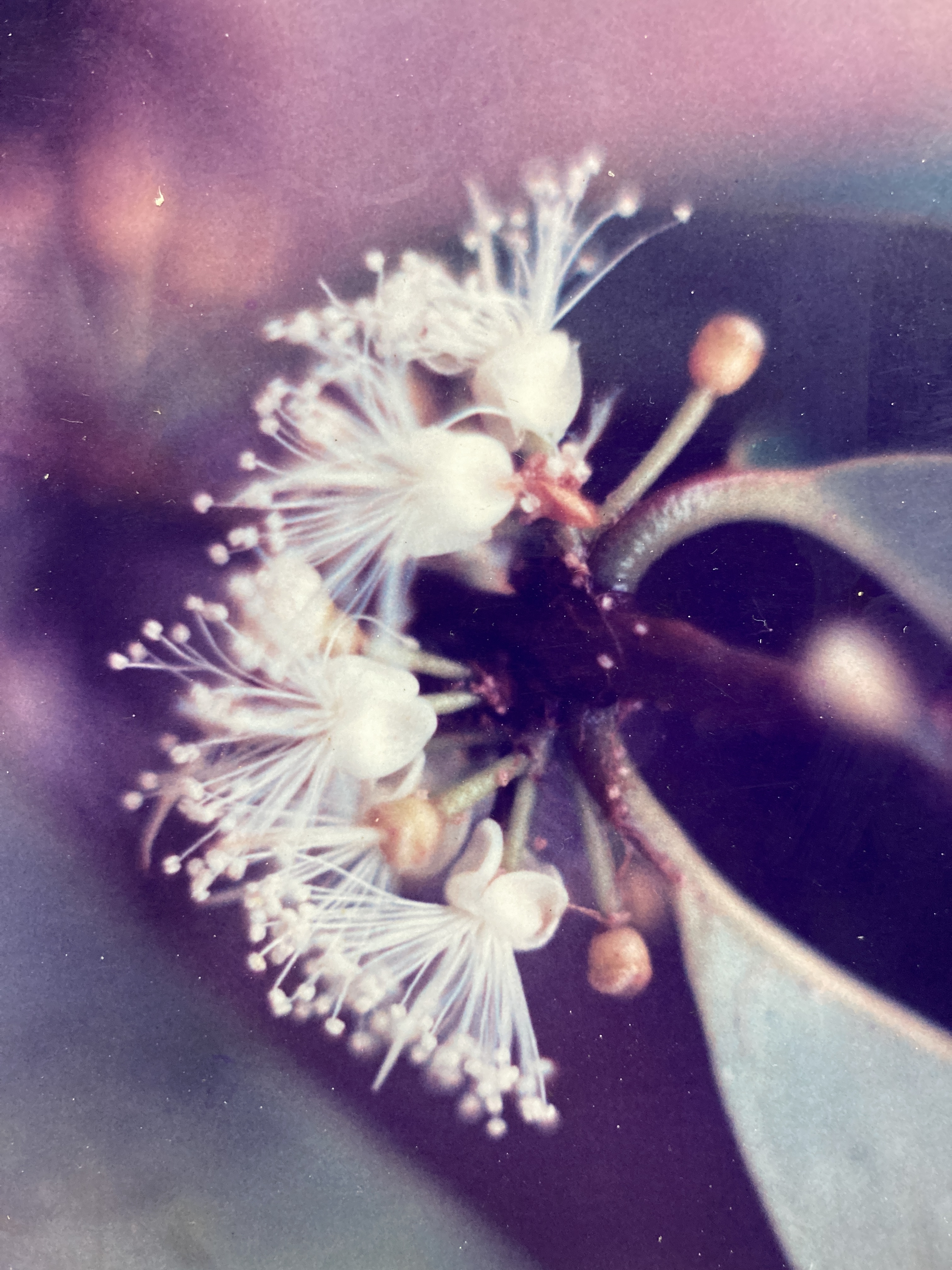Eugenia acapulcensis Steud.
MURTA
Common, evergreen, understory (10-15 m) tree found most abundantly along the sandy, vegetated fringe of the immediate coastline. Murta is notable for its prominence in Manuel Antonio, for its importance to the regions wildlife, for its densely packed and pungent-smelling flowers, and for its gaily colored, edible fruits.

Description: Murta has an slightly angular trunk that, although not columnar, is nevertheless vertical and mostly straight. The bole is often grooved or creased and its cross-section diverges strongly from a uniform circle. Perhaps due to the tree’s small girth and stature (the largest specimens have diameters of only 30 cm), buttresses are lacking. Murta has gray to light brown bark that is vertically fissured and exfoliates in thin, narrow strips. Branches cover the upper two thirds of the bole, though the crown they produce is thin, open and airy. Leaves (9 by 6 cm) are simple and opposite (typical of the Myrtaceae). Supported by 1 cm petioles, the blades are widely elliptical and they possess moderately developed drip-tips. A single, prominent mid-rib is evident, impressed into the lamina’s light green, waxy surface; while secondary veins remain inconspicuous. An annual growth spurt, involving the production of new foliage, generally occurs late in the year: sometime between September and November.
Flowers (1 cm) grow in dense, nearly sessile, axillary panicles. Each blossom consists of a set of very prominent, long white stamens and a single central pistil. These numerous filaments are surrounded by four small, white petals that fold back around the pedestal, forming an angular, box-like structure. When in bloom, flower profusity can be so great that the stamens from adjacent blossoms merge, creating a single, spherical, twig-hugging head of snow-white filaments. Also during times of intense activity, the strong, musty, and pungently sweet scent that the flowers emit pervades the coastal environment and may be notable along park trails. Flowering periods are usually unsynchronized, irregular, and extended events, with blossoms observable intermittently from February through July. May remains the most consistently fertile month for this species. (In 1990, a sporadic but significant flowering event occurred in October and November).
Fruits are small (1 cm), spherical drupes. Green at first, the record of their slow maturation is recorded by their color. Paling initially to golden-yellow, the fruits eventually darken to wine-red and finally ripen purple or black. Often, one fruit is borne in each leaf axil – on opposite sides of the twig – accentuating the paired and symmetrical appearance of the foliage. Each drupe consists of a thin layer of juicy, edible flesh surrounding a single, stony, pale orange and spherical seed (0.5 cm). Harvests – more consistent and regular than flowering periods – occur annually between August and October. Murta crop size may vary from season to season, though most years witness prolific fruit production.
Similar Species: Many trees of the large Myrtaceae and Rubiaceae families share rounded, oppositely arranged, and simple leaves with this species. Fortunately, most other forest trees do not. Though MANP is home to about 7 other Myrtaceaes, these should not cause confusion for all but one have leaves that are at best half as large as Murta’s. The exception, Guayabón, has an unmistakable and distinctive orange-red, smooth-barked trunk. Among the Rubiaceaes, Chomelia microloba, Chione sylvicola, Posoqueria latifolia, and Faramea occidentalis share their leaf configurations and statures with Eugenia. However, the latter three trees have leaves at least fifty percent larger than Murta’s and Chomelia has a deeply grooved, very irregular truck that cannot be confused with that of this species (see descriptions).
Natural History: Pungently perfumy, Murta flowers are visited and pollinated by many species of Hymenoptera, while a large variety of mammals (e.g. White-face and Squirrel monkeys) avidly seek out and eat Murta fruits. The great diversity of wildlife that rely on Eugenia for nectar and forage underscore the importance of this species as a component of the local ecosystem. Murta is also notable for its salt tolerance, surviving in drought-prone, sandy beachside soils that are constantly assaulted by sea spray and even occasionally washed by high waves.

Uses: The fruits of the Murta tree are edible. Black, soft, and juicy upon ripening, they possess a sweet and sour, but agreeable taste. Some chemical component that they harbor can cause a slight numbing of the tongue.
Distribution: In Manuel Antonio National Park (MANP), Murta prefers sunny, coastal locations and it is found with greatest frequency amid the forests that line the beaches of this park. A few individuals grow in the interior forest as well, although generally near light gaps. Primarily confined to the northern part of the country, Costa Rica maintains Murta populations in the Santa Rosa, Rincon de la Vieja, Cabo Blanco, Monteverde, Tortuguero, La Cangreja, and Caño Negro Reserves and National Parks. This species of Eugenia ranges from Mexico to northern Colombia and the Antilles.
Images: Flower Flower2 Fruit & Leaf Fruit & Leaf2


